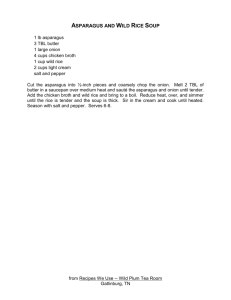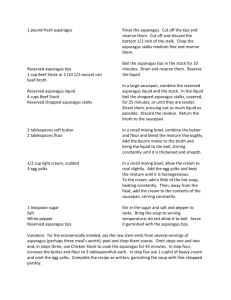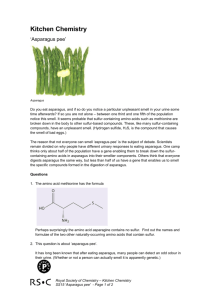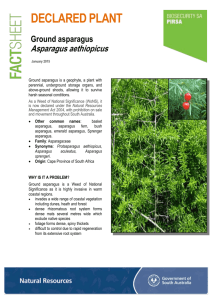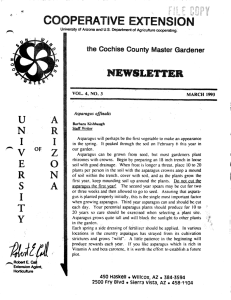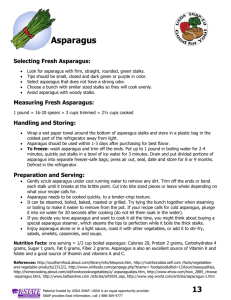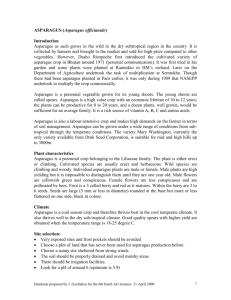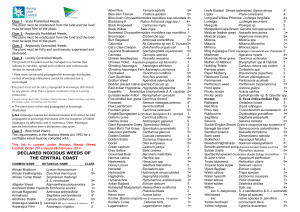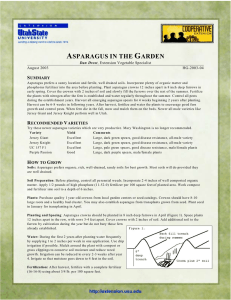What grows together goes together, growing other seasonal
advertisement
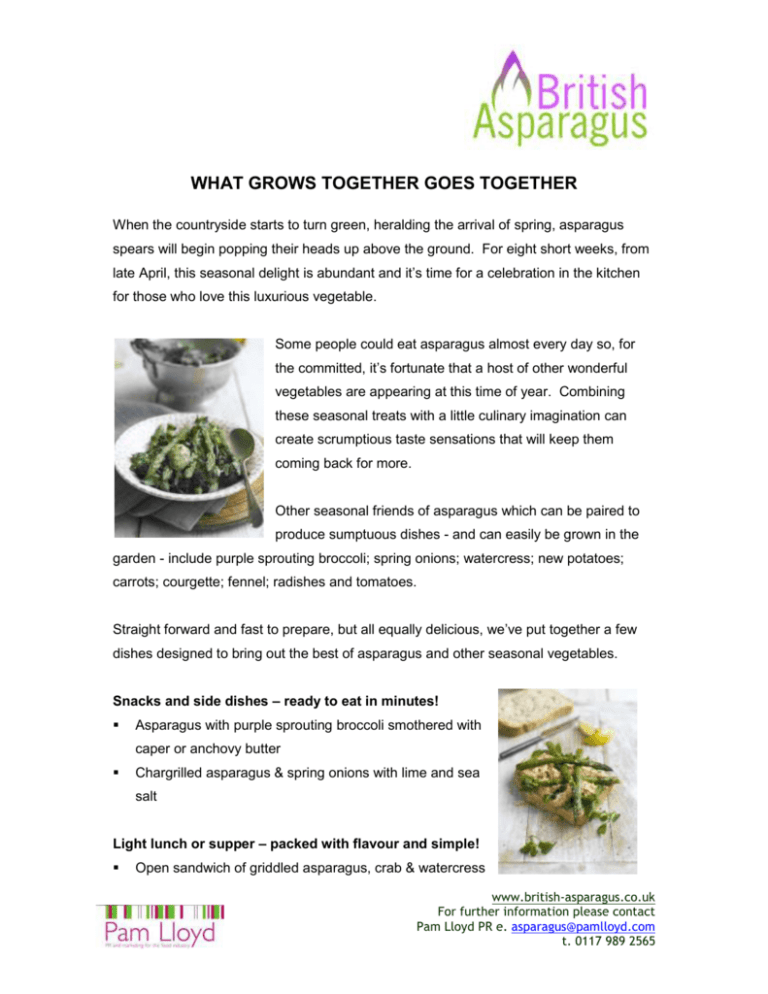
WHAT GROWS TOGETHER GOES TOGETHER When the countryside starts to turn green, heralding the arrival of spring, asparagus spears will begin popping their heads up above the ground. For eight short weeks, from late April, this seasonal delight is abundant and it’s time for a celebration in the kitchen for those who love this luxurious vegetable. Some people could eat asparagus almost every day so, for the committed, it’s fortunate that a host of other wonderful vegetables are appearing at this time of year. Combining these seasonal treats with a little culinary imagination can create scrumptious taste sensations that will keep them coming back for more. Other seasonal friends of asparagus which can be paired to produce sumptuous dishes - and can easily be grown in the garden - include purple sprouting broccoli; spring onions; watercress; new potatoes; carrots; courgette; fennel; radishes and tomatoes. Straight forward and fast to prepare, but all equally delicious, we’ve put together a few dishes designed to bring out the best of asparagus and other seasonal vegetables. Snacks and side dishes – ready to eat in minutes! Asparagus with purple sprouting broccoli smothered with caper or anchovy butter Chargrilled asparagus & spring onions with lime and sea salt Light lunch or supper – packed with flavour and simple! Open sandwich of griddled asparagus, crab & watercress www.british-asparagus.co.uk For further information please contact Pam Lloyd PR e. asparagus@pamlloyd.com t. 0117 989 2565 Uncooked Asian asparagus salad – with soy, chilli, crisp fried shallots, ribbons of fresh carrot and courgette and shredded fresh coconut. If you want to try growing your own asparagus and other seasonal vegetables at home, we’ve put together a guide on how to do it! Spring Onions Sow little and often to ensure a regular supply throughout summer and autumn; sowing a winter-hardy type in August will produce a useful spring crop. Sowing: Sow thinly 13mm (0.5in) deep from March to July in rows 10cm (4in) apart. Growing: Thin the seedlings if necessary until they are about 2.5cm (1in) apart. Water if the soil/weather is dry; mulching will help maintain soil moisture. Harvesting: Lift the plants when the plants are small and young and the bulb is no more than 13mm-2.5cm (0.5-1in) across. Courgettes They need a sunny position, a moisture-retentive soil and somewhere out of cold winds. Sowing: For earlier crops or in cold regions sow seeds on their side 13mm (0.5in) deep indoors in 7.5cm (3in) pots of compost from mid- to late April at 18-21C (65-70F). Growing: Make planting pockets 60cm (2ft) apart for bush varieties or 1.2m (4ft) apart for trailers two weeks before seed sowing or planting. The pockets should be 30cm (12in) square and deep and filled with a mixture of compost or well-rotted manure and soil; leave a low mound at the top of the planting medium. Sprinkle a general fertiliser over the soil. Put one plant into the top of the mound. Pinch out the tips of the main shoots of www.british-asparagus.co.uk For further information please contact Pam Lloyd PR e. asparagus@pamlloyd.com t. 0117 989 2565 trailing varieties when they are 60cm (2ft) long. Keep the soil constantly moist by watering around the plants not over them. Feed every 10-14 days with a high potash liquid fertiliser once the first fruits start to swell. Harvesting: Harvest courgettes when the fruit is still quite small, courgettes 10-12.5cm. Regularly picking courgettes while they are small will ensure a long cropping period. Radishes Radishes need to be grown steadily and harvested young to ensure they remain succulent, otherwise they can become woody and inedible. Sowing: Sow thinly 13mm (0.5in) deep in rows 15cm (6in) apart for summer types. Summer cultivars are sown from March to mid-August; for an early crop sow in February in pre-warmed soil and protect with cloches. Growing: By sowing seed thinly (approximately 2.5cm/1in apart) there should be no need for thinning summer cultivars, but any that is needed should be done as soon as possible. Keep the soil moist to ensure rapid growth, keep the roots fleshy and tasty and prevent splitting. Harvesting: Pull summer radishes as required, making sure they are never left to mature and become woody. ENDS www.british-asparagus.co.uk For further information please contact Pam Lloyd PR e. asparagus@pamlloyd.com t. 0117 989 2565
